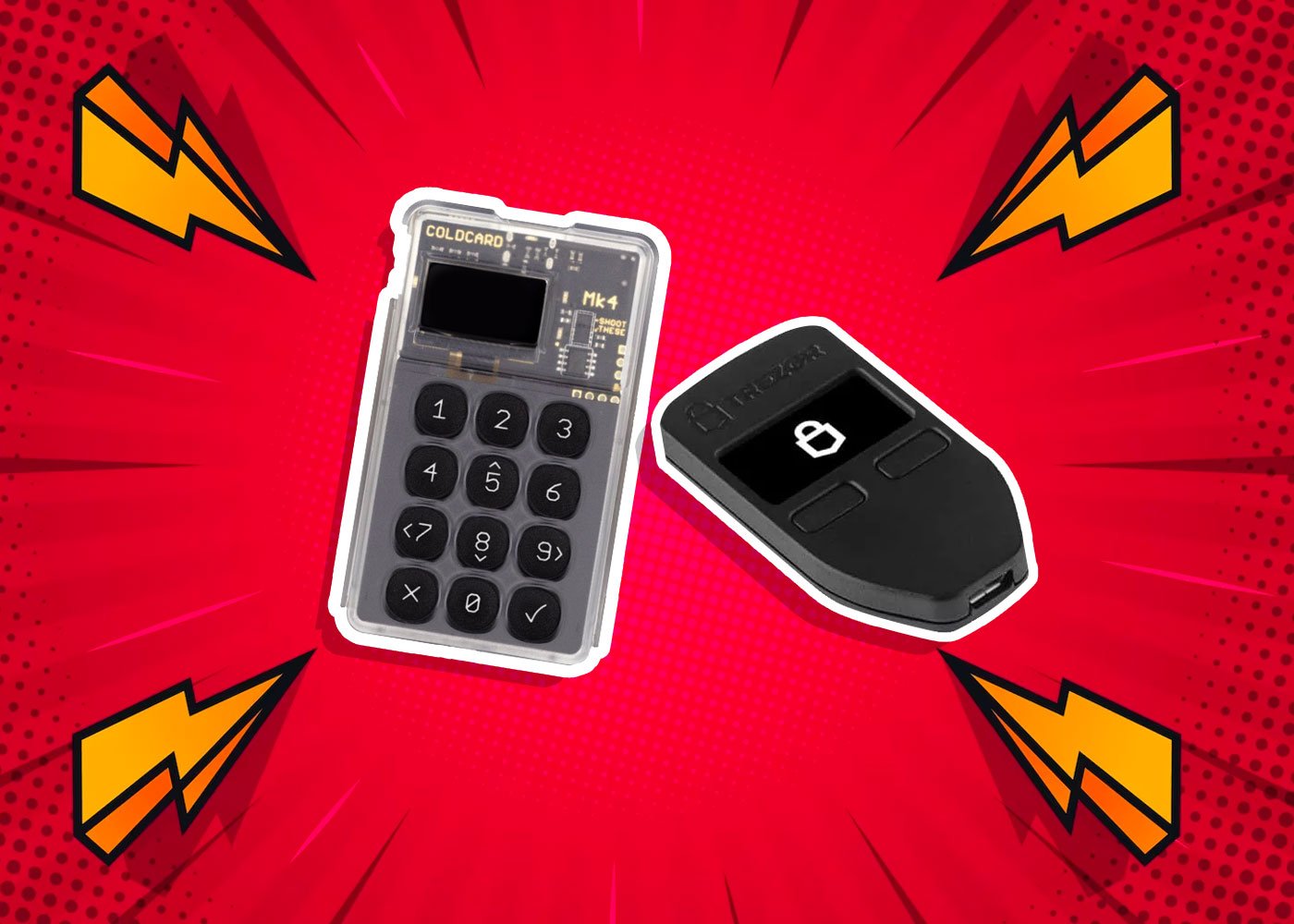When it comes to hardware wallets, these two hardware devices are the first to come to mind. Coldcard has an older and classic look, while Trezor has a more technological and newer look. Basically, the two wallets are not very different from each other. However, it is important to keep in mind that they naturally have some advantages and disadvantages.
If you need to choose between these two tools to secure your Bitcoin and other cryptocurrencies, this comparison article is definitely for you. Coldcard and Trezor are two popular options that offer strong security features, user-friendly interfaces and reliable customer support.
What are the Security Advantages?
One of the most important features of a hardware wallet is its security features. Both Coldcard and Trezor offer numerous protection mechanisms such as multi-factor authentication, PIN protection and password options. One detail is worth mentioning here, though: Coldcard takes security to the next level by providing a secure item chip that can store your private keys offline.
This provides a higher level of protection against physical and digital attacks. Coldcard also provides further security with its “secret encryption” feature, which allows you to destroy the entire contents of the wallet in minutes.
Trezor’s security features are also quite strong, but some of these features may not be available on Coldcard. Therefore, it is advisable to compare the security features of both wallets to determine which one is better for you.
Comparing Usability and Interface Features
Usability and interface are very important in a hardware wallet. Coldcard and Trezor both come with a user-friendly interface. However, the usability, navigation and customization options of the two wallets differ.
Trezor, for example, offers a simpler interface than Coldcard and is therefore more suitable for beginners. On the other hand, Coldcard offers more customization options for advanced users.
Which Cryptocurrencies Does It Support?
This is the most fundamental difference. Accordingly, Coldcard only has an infrastructure that provides Bitcoin security. In this way, it should not be forgotten that it is extremely useful and can be used comfortably in the long term. However, this can also be considered a minus as it does not support other cryptocurrencies.
Trezor, on the other hand, has an infrastructure that supports many widely used and prominent cryptocurrencies in the market.
Backup and Restore Options
The backup and restore options offered by Coldcard and Trezor can be explained as follows. Both wallets offer different backup options. They allow you to restore your private keys in case a device is lost or damaged. However, the backup and restore processes of the two devices are different. Therefore, it is worth noting that they differ in terms of security measures.
Although Coldcard comes in the form of a single product, Trezor comes in different models that constantly update themselves.
Customer Support and Feedback
The customer support capabilities of Coldcard and Trezor should also be evaluated. Both wallets offer support options such as email, phone and live chat. However, Coldcard also offers support on platforms such as Telegram and Keybase.
Additionally, Coldcard provides a detailed manual and educational materials to help users get the most out of their wallets. Trezor offers similar support, but is less detailed compared to Coldcard.
Coldcard and Trezor offer strong security features, user-friendly interfaces and reliable customer support. However, both wallets have different features and it is important to compare their features to determine which wallet is better for you.
Trezor may be more suitable if you are looking for a wider range of cryptocurrencies, while Coldcard is better if you prefer a simpler interface. Both devices come at different prices, so your budget may also influence your choice.






























































































![BitTorrent [New]](https://s2.coinmarketcap.com/static/img/coins/64x64/16086.png)















